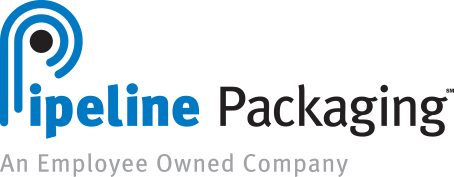When it comes to shipping hazardous materials, there are strict rules every company needs to follow concerning packaging. However, those packaging requirements aren’t necessarily the same for every shipper. To help, we’ve put together a quick rundown of the different requirements for major shippers and where you can find exact details for those requirements. This rundown includes details for the following shippers:
- FedEx
- UPS
Hazardous Shipping Requirements for CFR 49

CFR 49 has several volumes, chapters, and subchapters. In terms of regulations for shipping hazardous materials, you’ll want to focus on Volume 3, Chapter 1 for information involving pipeline and hazardous materials safety administration, which covers the following subchapters:
- Hazardous materials regulations (Subchapter C, Parts 171-177)
- Hazardous materials regulations, continued (Subchapter C, Parts 178-185)
These subchapters contain general information and regulations, a hazardous materials table to help define the specific packaging needs for specific types of materials, and other key details of what you need to do to ship your containers domestically.
Of these various sections, Part 173 General Requirements for Shipments and Packaging can provide plenty of guidance your responsibilities when using a domestic shipper. This part covers key packaging details for the following:
- Subpart A – General definitions and requirements
- Subpart B – Preparation of hazardous material for transportation
- Subpart C – Definitions, classification, and packaging for class 1
- Subpart D – Definitions classification, packing group assignments and exceptions for hazardous materials other than class 1 and class 7
- Subpart E – Non-bulk packaging for hazardous materials other than class 1 and class 7
- Subpart F – Bulk packaging for hazardous materials other than class 1 and class 7
- Subpart G – Gases; Preparation and Packaging
Within these sections, §173.22 Shipper's Responsibility provides a rundown of how a person or company can legally “offer a hazardous material for transportation in a packaging or container.” This breakdown is a good breakdown of your compliance requirements if you want to ship containers with hazardous materials and not face thousands of dollars in potential fines.
Hazardous Shipping Requirements for FedEx
As with any other organization that ships domestically, FedEx requires you to follow CFR 49. In addition, FedEx has its own stipulations apart from DOT standards.
First, your business must complete an approval process to use FedEx Ground to ship hazardous materials. This involves filling out FedEx’s hazardous materials qualification form for company approval. Once approved, FedEx lays out additional rules in its hazardous materials shipping guide, which covers its own conditions for shipping. In addition, FedEx also provides separate guidelines on the following:
- Battery shipments
- Accepted and prohibited materials
- Marking and labeling
- An overview and examples of completed packaging
Hazardous Shipping Requirements for UPS
Like FedEx, UPS also has some separate rules that you must follow in addition to CFR regulations. UPS also requires any person or company shipping hazmat containers to also follow ISTA testing procedures, specifically those that fall under Procedure 3A. You must also enter into a dangerous goods agreement before using UPS for any hazmat shipments. To help, UPS provide a customized guide for transporting hazardous materials that includes the following information:
- Quick links for dangerous good acceptance tools, definitions, and regulations
- New regulations and requirements
- Hazardous materials support resources
Invest in the Right Packaging for Hazardous Substances
Regardless of which shipper you choose, it’s important to invest in the drums, pails, or any other type of container that’s made to fit your specific hazmat needs. At Pipeline Packaging, we can help you find the right containers for your materials and guide you through the process if you have any questions. Between our range of quality containers and value-added services like packaging tests and inventory management, we can help you stay compliant with your shipping responsibilities.
Are you in need of quality hazmat packaging? Check out our available packaging products online or contact us today to talk to one of our experts today about your specific needs.


